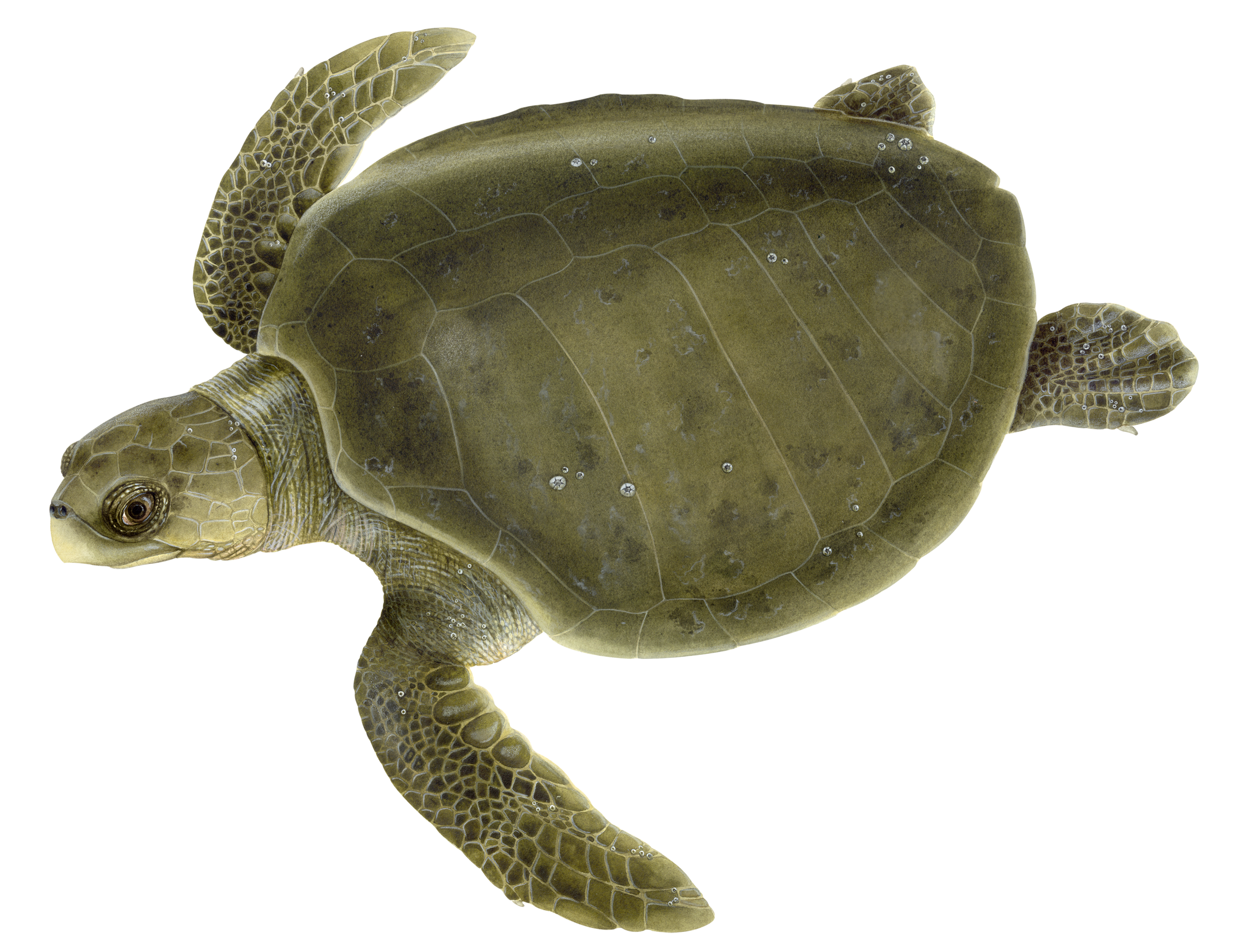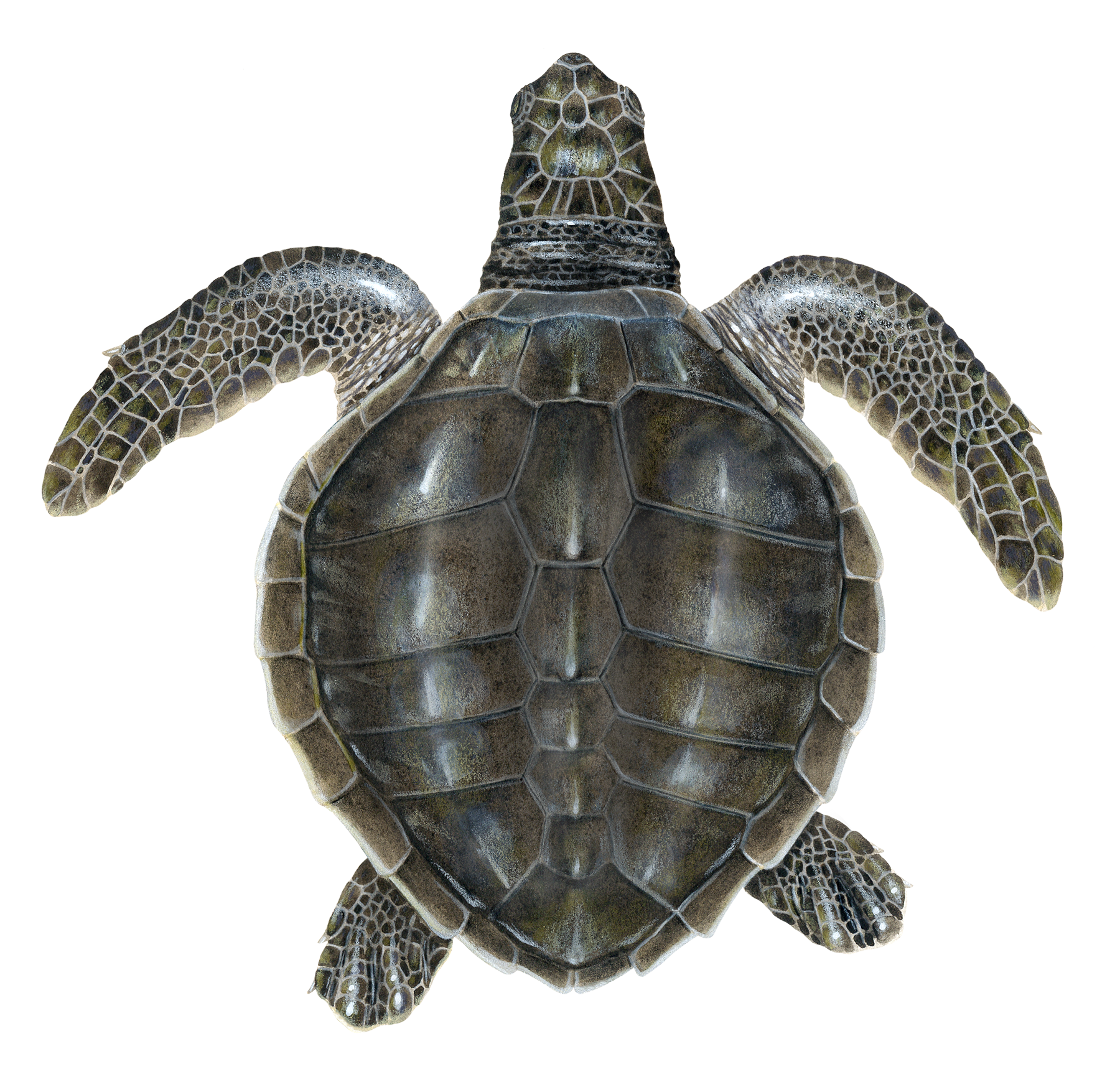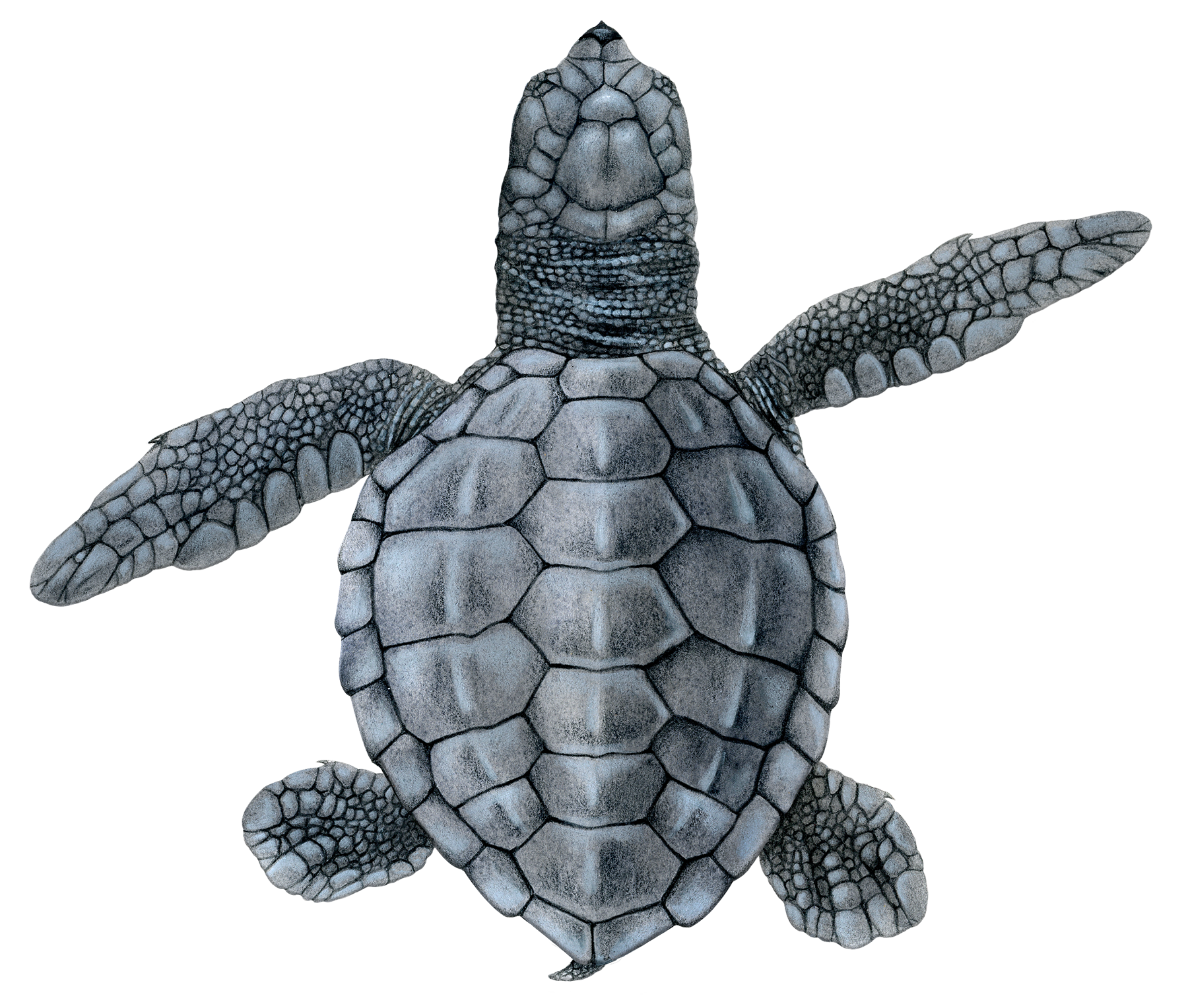Olive Ridley Sea Turtle (Chelonia mydas)
Thousands of Olive Ridleys can show up at nesting beaches together during arribadas, nesting events timed around moon cycles. The word arribada means “arrival” in Spanish. The only other sea turtles known to nest in arribadas are Kemp’s Ridleys.
Scientific Classification
Kingdom: Animalia
Phylum: Chordata
Class: Reptilia
Order: Testudines
Family: Cheloniidae
Life Cycle
Natural Lifespan: 50 years
Age at Sexual Maturity: 10 - 18 years
Average Clutch Size: 100 - 110 eggs
Average Clutches per Season: 1 - 3 clutches
Nest Incubation Period: 50 - 60 days
Remigration Interval: 1 - 8 years
Species Description
Adult Weight: Up to 45 kgs (100 lbs)
Adult Size: 0.6 - 0.76 m (2 - 2.5 ft)
Appearance: Triangular head with light cheeks, grayish-olive coloration, rounded carapace
Diet: Wide variety of crustaceans, mollusks, bryozoans and algae
Habitat
Geographic Range: Tropical and subtropical waters worldwide.
Marine Habitat Use: Pelagic and coastal zones.
Olive ridleys occupy a wide range of habitats to suit their omnivorous diet. This species will dive to depths of 150 m (46 ft) to feed on benthic invertebrates like shrimp or forage on snails and marine algae in shallower waters.
Conservation
Photo by Ralph Pace
Olive ridleys are one of the most abundant species. Their omnivorous diet reflects a readiness to adapt to changing conditions. Olive ridleys can be solitary nesters or participate in arribadas. These mass nesting events may reduce the effects predators targeting nesting females, like jaguars, can have on the population as a whole.
Unlike highly migratory sea turtle species, olive ridleys typically remain within 850 km (459 nmi) of their natal nesting beaches throughout their lifetime. Thus, olive ridleys benefit most from the conservation measures enacted by the nations controlling these waters as per the UN Law of the Sea.
The varied tastes and habitats occupied by olive ridleys also put this species at grave risk of accidental capture. Olive ridleys chasing bait become hooked and entangled in various types of fishing gear. Substitution of J hooks with circle hooks can reduce rates of capture but additional innovations are needed to reduce fisheries bycatch of olive ridleys.
Upwell’s Work With Olive Ridleys
Did you know we have three species of sea turtle species in US west coast waters (olive ridleys, loggerheads and green turtles) that are susceptible to cold-stunning?
Watch this video to see how Upwell Wildlife Veterinarian Dr. Heather Harris and numerous collaborators in the NOAA West Coast Stranding Network are working together to figure out how we can better care for cold-stunned sea turtles in our waters.
Thank you Marine Biologist Terry Lilley at Underwater2web, the Marine Mammal Center, and the Oiled Wildlife Network.
Fun Fact
The name Olive ridley is attributed to Henry Nicholas Ridley, a botanist who encountered the species on Fernando de Noronha Island off of Brazil. The later description of Kemp’s ridley turtles applied the word ridley to a separate species with physiological and behavioral similarities.




